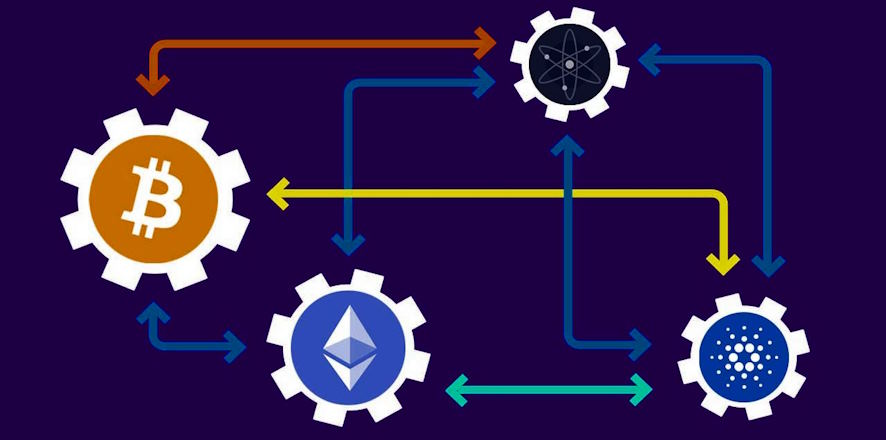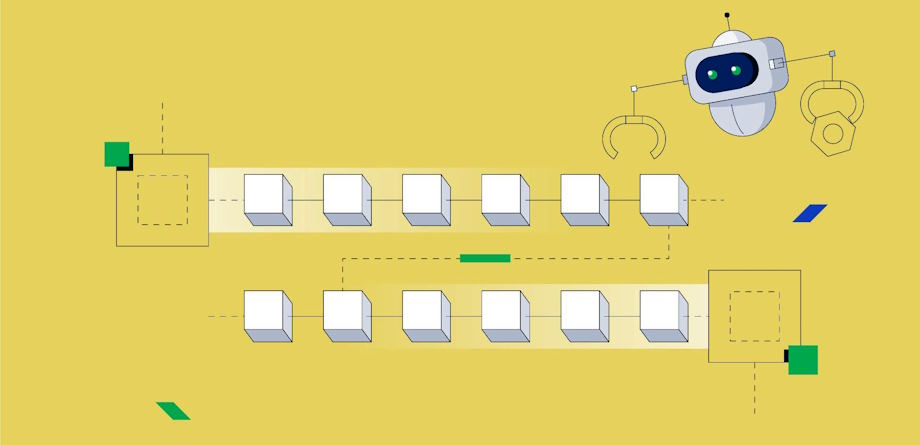
Interoperability in Blockchain Development: Connecting Different Networks
Blockchain technology has emerged as a groundbreaking innovation, transforming industries and redefining traditional systems of trust. As blockchain networks proliferate, each with its own unique features and functionalities, the need for interoperability becomes increasingly vital. Interoperability in blockchain development refers to the ability of different networks to seamlessly communicate and interact, enabling the exchange of assets, data, and functionalities across platforms. In this article, we delve into the challenges and solutions involved in connecting diverse blockchain networks, exploring the importance of interoperability in fostering collaboration, innovation, and the growth of decentralized ecosystems. By bridging the gaps between isolated networks, interoperability holds the key to unlocking the full potential of blockchain technology and accelerating its adoption across various industries.
The Need for Interoperability in Blockchain Development
Growth of blockchain networks and their diverse functionalities:
The blockchain ecosystem has witnessed remarkable growth, with numerous blockchain networks emerging to cater to diverse use cases and industries. Each blockchain network offers unique features, such as smart contracts, privacy features, scalability solutions, and specialized consensus mechanisms. These diverse functionalities have fueled innovation and transformed industries such as finance, supply chain, healthcare, and more. However, the proliferation of isolated blockchain networks has also led to fragmentation and limited collaboration among these networks.
Limitations of isolated blockchain networks:
Isolated blockchain networks, while serving their specific purposes effectively, face inherent limitations when it comes to seamless communication and interoperability. Each network operates within its own ecosystem, using its own protocols, data structures, and consensus mechanisms. This fragmentation creates data silos and restricts the flow of information and assets between different networks. As a result, opportunities for collaboration and sharing resources are diminished, hindering the potential for large-scale adoption and innovation in the blockchain space.
Benefits of interoperability in fostering collaboration and innovation:
Interoperability holds immense potential for blockchain development by breaking down barriers between isolated networks. By enabling seamless communication and interaction, interoperability fosters collaboration among different blockchain networks. It facilitates the exchange of assets, data, and functionalities, allowing developers to leverage the strengths of multiple networks and create more powerful and versatile applications. Interoperability also promotes resource sharing, scalability, and improved efficiency within the blockchain ecosystem, as interconnected networks can pool their resources and collectively solve complex problems.

Approaches to Interoperability
Standards and protocols for cross-chain communication:
To achieve interoperability between blockchain networks, various standards and protocols have been developed. One such approach is through atomic swaps and cross-chain transactions. Atomic swaps enable the direct exchange of assets between different blockchains without the need for intermediaries, enhancing the efficiency and security of cross-chain transactions. Additionally, interledger protocols provide a standardized framework for interoperability, allowing seamless value transfer across multiple blockchain networks. Moreover, sidechains and pegged assets offer solutions by creating auxiliary chains that are connected to the main blockchain, enabling the transfer of assets between the main chain and the sidechains.
Bridging solutions and middleware platforms:
Bridging solutions and middleware platforms play a crucial role in achieving interoperability. Oracle-based solutions act as intermediaries between different blockchains, providing real-world data and events to blockchain networks, facilitating cross-chain communication. Interoperability-focused blockchain platforms, on the other hand, are specifically designed to connect and interoperate with other blockchain networks. They serve as a bridge between different networks, allowing seamless asset transfers and data exchange. Furthermore, interchain service providers offer infrastructure and tools for developers to build interoperable applications, simplifying the process of connecting and integrating with multiple blockchain networks.
Collaborative initiatives and consortia promoting interoperability:
Collaborative initiatives and consortia play a vital role in promoting interoperability standards and driving innovation in the blockchain space. Industry consortia, comprising blockchain projects, enterprises, and technology providers, collaborate to develop interoperability standards, protocols, and best practices. Examples include the Enterprise Ethereum Alliance (EEA), Hyperledger, and the InterWork Alliance (IWA). Interoperability projects and research initiatives also contribute to the advancement of interoperability solutions. These initiatives focus on developing novel technologies, conducting research, and fostering collaboration among stakeholders to overcome the challenges of connecting diverse blockchain networks.

Benefits and Implications of Interconnected Blockchain Networks
Improved efficiency and scalability through resource sharing:
One of the significant benefits of interconnected blockchain networks is the ability to share resources, leading to improved efficiency and scalability. By connecting different networks, they can collectively solve complex problems and distribute the workload, resulting in faster transaction processing and increased throughput. Additionally, resource sharing reduces redundancy and duplication of efforts, optimizing the utilization of computational power and storage capacity. This collaborative approach enables blockchain networks to handle higher transaction volumes, making them more scalable and capable of supporting the growing demands of decentralized applications.
Enhanced functionality and interoperable applications:
Interconnected blockchain networks offer enhanced functionality and enable the development of interoperable applications. Developers can leverage the strengths and features of multiple networks, combining them to create more powerful and versatile applications. For example, a decentralized application could utilize one blockchain network for its privacy features, another for its smart contract capabilities, and yet another for its scalability solutions. Interoperability allows these networks to seamlessly communicate and interact, enabling the application to leverage the unique benefits of each network and deliver a more comprehensive user experience.
Increased liquidity and asset portability:
Interoperability between blockchain networks enhances liquidity and asset portability. It allows for the seamless transfer of assets between different networks, eliminating the need for intermediaries or complex processes. Users can easily move their assets across networks, enabling greater flexibility and accessibility. This increased liquidity fosters a more dynamic and vibrant ecosystem, attracting more participants and encouraging broader adoption of blockchain technology. It also paves the way for the emergence of decentralized finance (DeFi) ecosystems that span multiple blockchain networks, providing users with a wider range of financial services and opportunities.
